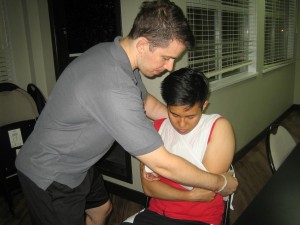Completing a first aid training course can do so much in changing our culture of apathy. Read on to learn more about how first aid can equip you with lifesaving skills to save a loved one.
It’s a sad reality that we live in a society of apathy. If an accident or an emergency happens, many would simply pass by and ignore the incident, as if nothing happened. Some would tweet or post a message on social network about the accident thinking that it helps. Either way, the victim does not receive any concrete help and thus the outcome worsens.

Behavioral experts call this phenomenon as the “bystander effect.” People who are present during the incident are waiting for someone to take the lead, resulting in the diffusion of responsibility. The individual assumes that since there are others around, someone will do something about it and the responsibility will rest on him. First aid training course prepares you to help in such emergency situations. By completing this training, you are not just equipped with lifesaving skills, including leadership skills.
However, many people who have completed a first aid training course actually think twice before helping. Some are afraid that they would end up being sued if ever something wrong happens to the victim after they helped. This fear hinders people who have basic first aid knowledge from providing help. That is why instructors include modules about the laws governing first aid.
But even if you have not completed a first aid training course, you can still do something to help in emergency situations. The single most important thing you can do is to dial 9-1-1. Many, if not all, people know how to use 911. In fact, even school-aged children are taught how to use emergency services. Activating the emergency help can do so much for the victim. Make sure, however, that you provide accurate and complete information about the accident so that appropriate and adequate help can arrive much sooner. When calling 911, speak clearly and do not hang up unless you are instructed to do so. In some cases, the operator will give you step-by-step instructions on how you can help. Give the operator your exact location and description of the situation.
Emergency services today are well-developed. They can respond in an emergency or accident as quick as 5 minutes which greatly improves
the outcome of the victim. Remember that every minute is crucial in first aid and emergency situations.
Still the best way to respond in an accident is to know what to do. The more people there are who have completed first aid training course, the more people will likely help.
